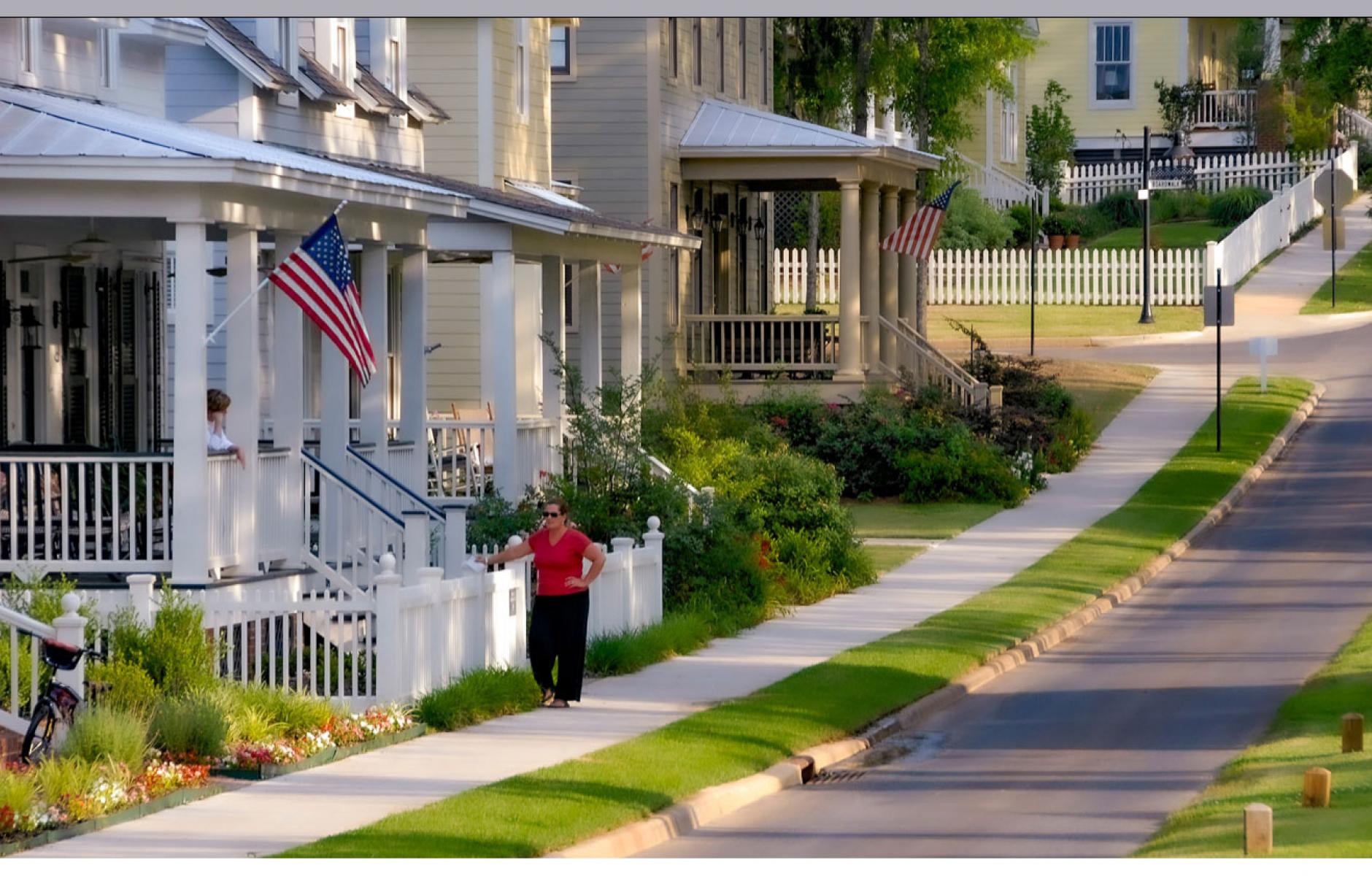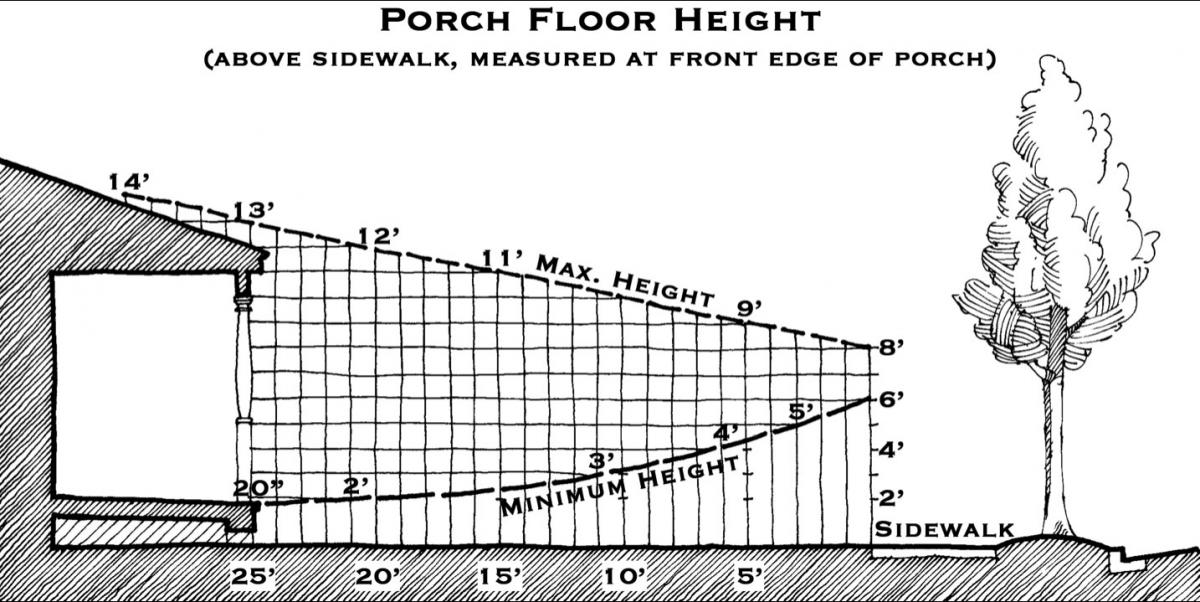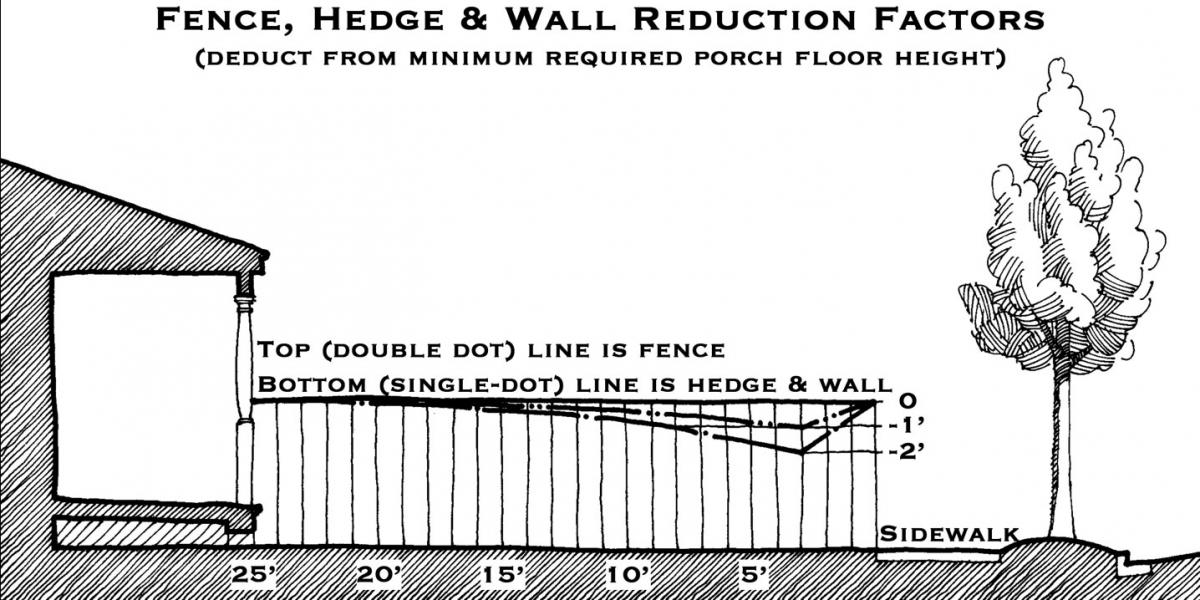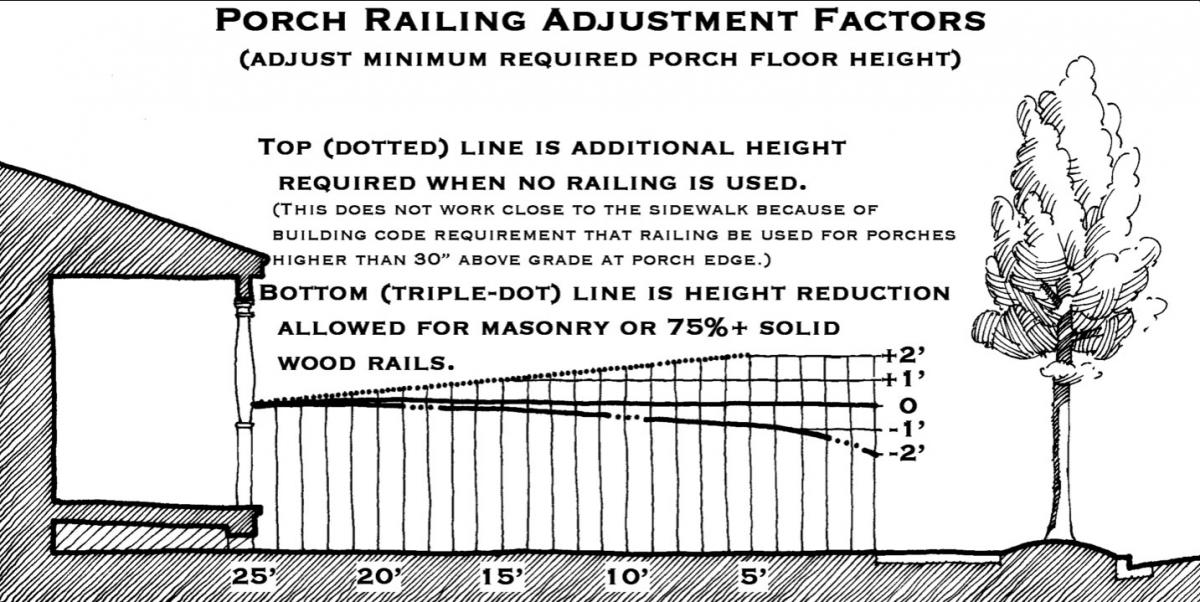
Porches, walkability, and sustainability
Editor's note: This is an update of an article first published in 2009 on The Original Green, with larger images. Steve Mouzon's diagrams take a few minutes to study (at least for me, to fully understand). They are a valuable tool to properly use the elements of that impact front porch comfort and usability. These include porch distance from the sidewalk, porch height, porch railings, and fences, hedges, or walls near the sidewalk. How these elements work together impacts whether the porch will be used, impacting community interaction, walkability, and, ultimately, sustainability. This is a article that deserves to be reposted on Public Square because it is useful and unique. Nobody but Mouzon has diagrammed these design relationships—although they have appeared naturally in vernacular neighborhoods over time.
I’ve been meaning to post this for some time, and was prodded to do so by a fascinating post on the social dynamic of porches by Patrick Deneen entitled A Republic of Front Porches. Sustainable places must be Accessible by a variety of means, especially by walking. Neighborhoods where people walk to numerous destinations are more likely to be Securable because people tend to know many more of their neighbors, and therefore are more likely to know when a stranger is in the neighborhood. Walkability is essential to a Serviceable place because people won’t walk to those services as often if the pedestrian experience is bad. So walking plays a fundamental role in the sustainability of a place. Porches can play a crucial role in the walkability of residential streets in a neighborhood, and therefore in the overall sustainability of the neighborhood.
People who lambast New Urbanist porches and fences for being “historical pastiche,” have no understanding of their abilities to encourage people to walk and to bind communities together. I got this shot in mid-2007 at the Waters near Montgomery, Alabama. After the women had finished their conversation, I walked over to the woman on the porch and asked her permission to use the image, and she agreed. I asked her “was that lady a friend of yours?” She said “no, I just met her right then.” So this image is the beginning of a relationship, caught in the act!
Porches and fences play a pivotal role. A porch can be a finely-honed Social Interaction Device, while a fence can be a precisely-tuned Personal Space Protection Mechanism. How? It’s primarily about geometry, not about style. For years, I measured porches and their relationship to the sidewalk. I looked for signs of life, not just furnishings... things like a coffee mug or newspaper that had been set aside when someone called, or a child’s toy. What I found was that there is a clear distinction between porches people will sit on and ones they won’t, and it’s based on how close the front edge of the porch is to the sidewalk, and how far above the sidewalk it is. Here’s a diagram showing the basic relationship:

As the porch gets closer to the sidewalk, it must get higher above the sidewalk, otherwise people simply will not sit on the porch because the feel too vulnerable. My observations are entirely unscientific (I’m an architect, not a social scientist) but I have observed this relationship in a broad range of neighborhoods, from the most affluent to those that are struggling. So I believe this is a relationship that is somehow hardwired into the human mind... or at least the American mind. It’s certainly wider than any one place. But this doesn’t explain everything... there are ways to modify the height. One is by the use of a frontage fence, hedge, or wall:

This diagram illustrates the fact that if you have a frontage fence (the double-dot line,) then you can reduce the height of the porch by an increasing amount until you get 3 feet away from the sidewalk, at which point the benefit quickly disappears as the fence gets closer to the porch rail. Hedges and walls provide double the benefit because they are solid, allowing people to feel more comfortable sitting on the porch. But that isn’t all. The porch railing also plays a pivotal role:

The middle (solid) line shows that the top chart assumes a picket railing. The top (dotted) line indicates that if you have no railing at all, you must raise the porch height. It runs out 5 feet from the sidewalk because, even using every trick in the book, there’s no reasonable way of building a porch closer to the sidewalk than this with no railing that is legal... it simply won’t meet code. The bottom (triple-dot) line illustrates the effect of a railing that is 75 percent solid or more; railings like this make the porch feel much more private.
And this stuff really works. I’m a Town Architect in several new towns and neighborhoods. I was at one of the neighborhoods recently and saw a porch that was much too close to the street for as low as it was built. I told the Town Founder to have the builder remove the rail and replace it with something more solid. Next month when I was back, the rail wasn’t changed out, so we had the same conversation. Another month passed, and still, it hadn’t been changed. The Town Founder promised to have another conversation with the builder, but this time, to do it more forcefully.
I got a very excited phone call from the builder a couple weeks later. “Steve, you’ll never guess what happened!” was how it started. “So tell me,” I asked. The Town Founder had basically told the builder that he had no choice, and so the guy finally changed the railing out for something really solid... 1x4s spaced only a quarter inch apart and chamfered at the edges, if I recall correctly. In any case, he said, “The paint wasn’t even dry when a couple came up who had looked at the house before but turned it down. They said ‘this looks different this time... it looks more livable, somehow.’ So even though they couldn’t explain exactly how it was better than before, this time, they pulled out their checkbook and put down their earnest money to buy the house.”
Here’s why: When you design a porch that is usable as an outdoor room, then it’s a useful part of the living space of the house. And it’s usually some of the least expensive space in the house because you don’t have to heat and cool it, and it doesn’t have walls or windows. But if it’s not useful as living space, then a porch is just very expensive decoration. Also, when someone can imagine themselves sitting on the porch, they can also imagine themselves visiting with their neighbors ... but if they can’t, it’s no different from any other house in a conventional subdivision.




